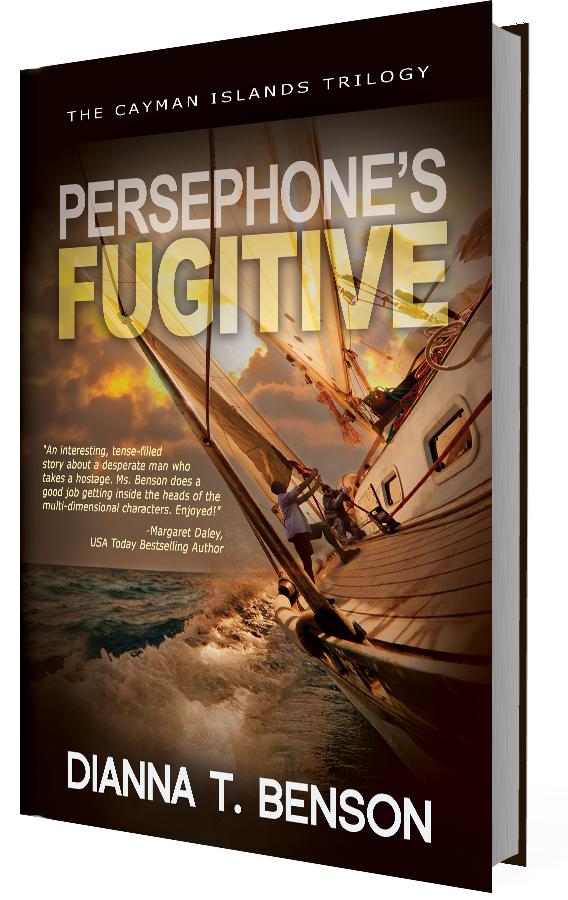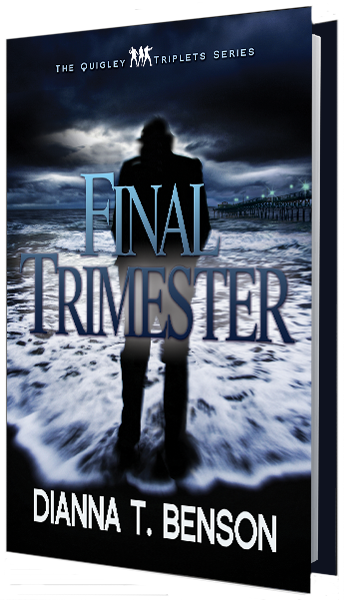Allergic Reaction
Posted by dtbAdmin on Mar 27, 2015 in Uncategorized | 0 comments
“EMS 6, allergic reaction, at 123 Main Street.” At 7:40 Christmas night, my partner and I flip on the lights and sirens and race our ambulance toward 123 Main Street. En route, my partner reads off details of our dispatched call on our dashboard laptop. “Twenty-year-old female. Respiratory arrest.” I grab the radio. “This is EMS 6, requesting assistance on our anaphylaxis call. Copy?” “Copy EMS 6. FD 14 is en route.” Once we roll up on scene, several people wave us into the two-story home, their faces contorted in panic. As we hear sirens from an approaching fire truck, we rush our loaded stretcher inside the front door and toward the young lifeless body lying on the tiled kitchen floor, cyanosis around her lips. I notice our patient’s chest is motionless, and I don’t feel or hear any air moving out of her mouth or nose. “What is her name?” I ask no one in particular in the crowd of about a dozen surrounding us. “Ally,” several voices answer. “Ally?” I rub my knuckles over her sternum. “Unresponsive,” I inform my partner, who’s yanking out a BVM (bag-valve mask), other airway equipment, and the med box. I feel for a carotid pulse on her flushed neck. “Rapid and weak,” I say to my partner. We share a look of understanding—our patient is headed for cardiac arrest. Our interventions must be quick and efficient. “What happened here?” I again ask the room full of people as I press the mask over my patient’s mouth and nose with my left hand in the E/C formation. With my right, I squeeze the football-sized bag every five seconds to oxygenate the young woman’s system. Her chest rises and falls with every squeeze, indicating her airway isn’t blocked by swelling or any foreign object. “She was eating and started coughing, and said her chest is all tight,” a hysterical woman answered, suddenly kneeling next to me. “She was itchy all over, had trouble breathing, hives on her back.” I face the middle-aged woman, tears flowing out of her eyes and down her cheeks. “Are you her mother?” “Yes. She was severely allergic to peanuts when she was little...
Read MoreIn Honor of EMS Personnel
Posted by dtbAdmin on Jul 16, 2014 in Blog, Medical/EMS | 0 comments
In Final Trimester the main character, Paramedic Jodi Duncan, is not based on a real person. She’s simply fictional, but she’s also a mix of real-life character traits I’ve found in the numerous EMS partners I’ve worked with throughout the years. I’ve never worked in EMS full time; it’s always been a part time career for me (too intense for full time work). My respect and gratitude for full time paramedics, EMTs, firefighters and all law enforcement is so high I dedicate this book to honor their devotion to helping others in need. They risk their life, health and limbs on a regular basis and for low wages. Being an author of fiction, I can say I wish entertainers (writers, actors, musicians, athletes, etc.) could somehow pass along the praise and income we receive to those who truly deserve it—our men and women who fight on behalf of the public when help is desperately needed. Like a braid, three entities work emergency scenes together: EMS, the fire department, and various law enforcement agencies. I hope Final Trimester depicts EMS in a way that encourages readers to deeply value the emergency medical system and the intensity and depth of the job. In movies and books, cardiac arrest scenes are often shown as someone places their fingers on the unconscious person’s neck for a second or two and then says something to the effect of the person is dead. Reality is: When someone finds an unresponsive person, they call 911, and if they have some medical training, they also initiate chest compressions and rescue breathing. Once EMS arrives on scene, unless we find the body fits the criteria to withhold resuscitation, we work a cardiac arrest for up to forty-five minutes with defibrillation, several rounds of eight different medications via IV and IO (intraosseous), cold fluids, etc. There is nothing a hospital can do that EMS can’t, so we work cardiac arrests on scene until there’s clearly no hope of resuscitation. The opening scene in Final Trimester shows the real-life manner EMS works a cardiac arrest. One cardiac arrest I worked, I had the strong sensation (for lack of a better term) of the patient’s soul...
Read MoreTrauma Call/Domestic Violence: Dianna T. Benson, EMT
Posted by dtbAdmin on Jul 15, 2014 in Blog, Medical/EMS | 0 comments
“EMS 6, Stabbing, TAC Channel 12” Responding to a domestic disturbance call, my partner and I park our ambulance in front of an upscale home over a million dollars. Not atypical – EMS is too often called out to the rich on domestic violence. “Did you know the power company turns off this zip code for lack of pay more than any other in the state?” I ask my new partner. “Yep. Idiots living beyond their means. No wonder they’re so stressed out and hurt each other.” At the front door, we join a fire crew, as three cops enter the house, all three with weapons drawn. “Scene isn’t safe?” I ask. “Not sure,” the last cop answers then trails his two buddies. The fire crew of four hangs back with me and my partner. “Was the door unlocked?” “Yup,” one of the firefighters answers me. After five long and boring minutes of standing around on the lawn in the dark of night, I radio in to dispatch. “EMS 6. Standing by outside residence. Any updates from PD on scene?” “Yes. Scene is secure. PD is with victim.” “Copy that.” I roll the front of our loaded stretcher into the house. In the family room, I find one officer bent over a body, the other two talking with an agitated man. I kneel at the woman’s other side. She’s supine on the carpet, her lapped hands pressed to her lower abdomen and covered in blood. “Ma’am?” I touch her shoulder in comfort. My patient blinks at me then flutters her eyes closed. “Can you tell me your name?” “Judy,” she whispered in a pained voice. I brush my hand over hers. “Judy, are you hurt anywhere other than here?” “Don’t know,” she mumbles. “Judy?” I stare into her eyes, mascara smudged underneath them. “Can you move your arms down at your sides?” She does. My partner hands me trauma scissors, a stack of 5X9 sterile gauze pads, and an occlusive dressing. As I rip open the gauze packages, my partner hooks...
Read MoreA Son’s Tale of Traumatic Brain Injury
Posted by dtbAdmin on May 20, 2014 in Blog, Medical/EMS | 0 comments
The term concussion is well known. The medical field refers to a concussion as a TBI – Traumatic Brain Injury. Contact sports are one of the top causes of a TBI, another are MVCs – Motor Vehicle Collisions. My teenaged son has endured four concussions. The first two as a goalie for the Junior Hurricanes and the third in a MVC. The first one took him out of school for a month and hockey for three months. The second, a year later, was more mild, which is unusual. Typically, a patient suffers a more severe TBI the second time. In the MVC, a classmate was driving them to school when another car struck them. This third TBI ended my son’s hockey career, preventing him from attending the Junior Hockey draft in Canada Spring of 2013. The problem wasn’t simply that this was his third concussion, although that in itself is a strong reason to end a contact sport career. With this third TBI, a neurologist evaluated him versus just the concussion clinic MDs who’d treated him with the first two. Not only was it his third TBI, but his symptoms were extremely severe, which didn’t make sense to me – the details of the MVC didn’t suggest such injuries for my son: 1) None of the others involved in the crash suffered any injuries 2) No air bags deployed 3) Vehicle damage was minor. As an EMT for nearly a decade, I wondered about underlining health conditions in my son. I also considered he had not fully recovered from the first two concussions and was in denial about his symptoms in order to play hockey. Sure enough, the neurologist diagnosed my son with hyper-mobile joints (something I already knew but wasn’t aware of the danger with contact sports.) The MD also diagnosed him with mild CP (cerebral palsy), a diagnosis that made sense to me since my son was born in respiratory arrest and was non-verbal and had spasticity until over age two. Both diagnosis are a recipe for injury, especially in contact sports. The MD gently told my son he was done playing goalie forever – it was devastating and...
Read MoreFall Call
Posted by dtbAdmin on Jun 26, 2013 in Blog, Medical/EMS | 0 comments
I love these posts from author and EMS expert Dianna Benson where she weaves medical detail into a fictional piece. Welcome back, Dianna! I shake my head to full awake from my cat-nap, and gear up for the trauma call less than a minute drive away. Once my partner and I roll on scene, I note the three cop cars arriving. Additional information regarding the call flashes across our ambulance laptop screen. Proceed with caution. Law enforcement dispatched. “What’s the deal?” my partner yells out the driver window at a cop rushing toward the building. “Another worker pushed the guy.” “Ah,” I say with a nod. “Attempted homicide.” “Or homicide, but if the guy’s not already dead, he’s gonna need us.” My partner jumps out of our ambulance. We grab a C-collar (cervical collar) and a backboard, and toss it onto our stretcher already loaded with EMS equipment and supplies. “Remember caution?” I remind my partner. “Yeah, yeah. Guy was pushed not shot or stabbed. Let’s go.” I really didn’t want to hang back either. Our patient’s life may be over if we wait. Inside the building, we push through a crowd of gawkers. I notice three cops drawing their guns at a man choke-holding some young woman, her wide eyes glossed-over. “Let her go,” the cop at the left yells out. “Now.” I’m hoping the guy follows the demand or we’ll have more than one patient. As I rest my hand on my radio in case I need to request additional EMS crews, I scan the area for an injured man on the ground. I spot our patient on the other side lying supine and lifeless in a pool of blood on the cement, his attacker in the middle and blocking us from our patient. I glance up and see the catwalk and assume our patient was pushed off of the suspended walkway about twenty feet above. The guy fell twenty feet? I think to myself. If he’s alive over there, he’s in critical condition. “Clear out,” the cop to the right shouts. “Everyone. Out of this room. Now.” The crowd scampers away. My partner and I hold our position behind the cops. The...
Read More



